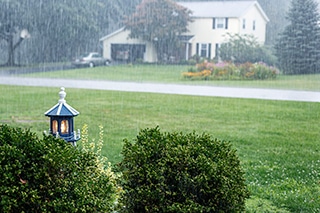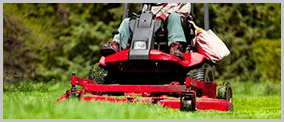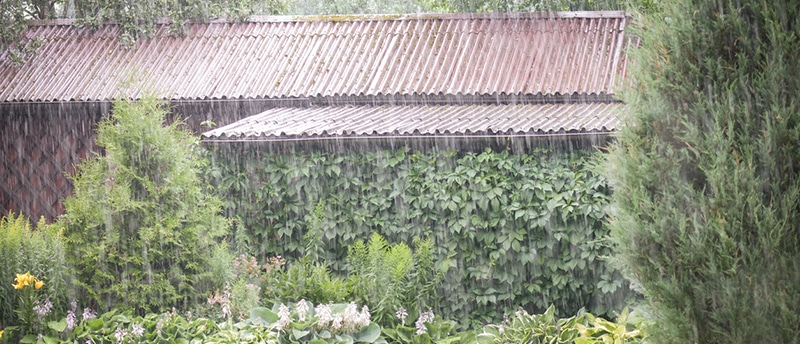When heavy rains and floods strike, they can wreak havoc on your beautiful yard, leaving behind a trail of debris and damage. If you find yourself facing the aftermath of a flood, it’s essential to take immediate action to restore your lawn’s health and beauty. In this article, we will explore effective strategies for yard cleanup and recovery after flooding, helping you bring back the lushness and vitality of your landscape in Toronto.
What Does Flood Damage Look Like?
The flood damage in a yard can vary depending on various factors such as the intensity of the flood, the slope of the property, the type of landscape and hardscapes, and the grass species present:
- Primary damage caused by flooding is typically influenced by the depth and temperature of the floodwaters.
- Secondary damage can occur after the flood has passed, including issues like moss growth, disease, sediment buildup, and encroachment of weeds.
- Floodwaters can harm grass by suffocating it, as the lack of oxygen during the flood can have adverse effects on the grass’s health.
- Even a few days of submersion in floodwaters, particularly if the water temperatures are high, can lead to the death of the grass.
- Signs of flood damage in a yard may include the presence of lingering puddles, patches of dead grass, an increase in weed growth, and the appearance of brown or yellow grass blades.
Professional Tips for Yard Clean-Up After Flooding
Clear Away Debris
It’s crucial to remove all debris from your yard to create a clean slate for recovery. Clear away fallen branches, leaves, and other objects that may have accumulated during the flood. Dispose of them properly or consider composting the organic material.
Clean Up Silt Deposits
Floodwaters often leave behind a layer of silt, which is a fine, muddy sediment. These deposits can suffocate the grass and restrict its access to air, sunlight, and essential nutrients. Use a rake or a stiff broom to gently remove the silt from your lawn’s surface. This step will help restore airflow and improve the soil’s ability to absorb water. It significantly helps to hire professional yard cleanup services to effectively handle the situation.
Remove Water from Puddles
Prolonged standing water can drown the grassroots and create ideal breeding grounds for pests and diseases. To address this issue, it’s important to soak up the puddles and improve drainage. Use a pump or a wet-dry vacuum to remove the excess water. Alternatively, you can create drainage channels to redirect the water away from your lawn. This entire process can become overwhelming so you can consider hiring yard clean-up services to tackle the problem.
Aerate Your Lawn
Aeration involves creating small holes in the ground to promote better airflow and drainage. Rent or purchase a core aerator and follow the instructions to aerate your lawn effectively. By aerating your lawn, you can improve soil compaction and promote healthy root development.
Encourage Grass Growth
To help your grass recover, overseeding is essential. To restore bare patches in your yard, it is essential to choose a high-quality grass seed that matches your local climate and soil type. Spread the seed uniformly over the bare areas, ensuring good coverage. Gently rake the seed into the soil to promote proper soil-seed contact. Water the newly seeded areas regularly to encourage growth. This will ensure that your lawn regains its lushness and density.
Fertilize
Floods can wash away essential nutrients from your soil. To replenish these nutrients and boost your lawn’s recovery, apply a balanced fertilizer. Look for a product with an NPK ratio appropriate for your grass type. Follow the application instructions carefully to avoid over-fertilization.
Look Out for Weeds
Weeds can quickly take advantage of the weakened state of your grass and invade the bare areas. Keep a close eye on your yard and promptly address any emerging weeds. Use appropriate weed control methods such as hand-pulling or applying selective herbicides. Be cautious not to harm your grass in the process.
Recovering your lawn from flooding requires patience, effort, and the right strategies. If the damage is extensive or you need assistance, consider hiring professional yard clean-up services near you. With their expertise, equipment, and knowledge, they can help restore your lawn to its former glory and ensure a healthy and vibrant outdoor space.
Contact Us for Yard CleanUp Post Lawn Flooding

Our dedicated team understands the specific challenges that Toronto homeowners face after flooding, and we have the expertise to tailor our services to your unique needs. They will assess your situation, provide a comprehensive plan, and restore your lawn to its former glory. In addition, we also provide spring and fall yard clean up services customized to your needs.
Reach out to Simple Solutions Landscaping at 416-271-3503 or fill out our online form, and let us turn your post-flood lawn into a thriving oasis.








